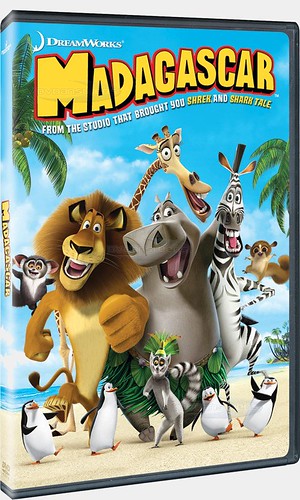Released in 2005 and 2006 respectively, DreamWorks Animation’s Madagascar and Disney’s The Wild are strikingly similar animated films featuring a handful of New York zoo animals that mistakenly end up in Africa. Quickly becoming two of the most popular family movies of the decade, the films’ animal characters (and their human characteristics) became almost instantly recognisable. But, with welfare ethics in mind, does the portrayal of these beloved zoo animals promote an ethical relationship between humans and animals?
MADAGASCAR

“New Mad Cover” by Ethan Hurd is licensed under CC BY-NC-SA 2.0
When DreamWorks Animation first announced the release of a movie set in Madagascar with zoo animals for protagonists, there was great hope among environmentalists and conservationists that the film would work wonders not just for the country but also animal welfare has a whole. However, as reported by the Wall Street Journal, “no member of the movie’s creative team had ever been to Madagascar, and the film’s portrayal of the landscapes and wildlife came from the Internet, books and videos”.
This is problem number one with the film.
The main issue with Madagascar is that the film ultimately emphasises the idea that the zoo is the natural home for animals. This concept was first explored by Schwalm (2015) in her analysis of zoo-related films, and several scenarios and examples of dialogue in Madagascar reinforce this idea.
While the plotline of the film is driven by the energetic zebra Marty’s desire to escape to ‘the wild’, once the animals are accidentally transported there, their only desire is to return ‘home’ to New York. This encourages the audience to believe that in general, zoo animals are quite pleased with the lives they lead in captivity.
The animal’s identity as ‘New Yorkers’ and their acclimatisation to their captivity is established from very early in the film, as Alex the lion would rather fall asleep to the bustling, background noises of metropolitan New York City, than the wildlife ambiance played by the zookeepers in order to replicate the animals’ natural habitat. As illustrated in the clip below, as Marty is filled with joy at the prospect of finally being in the wild, Alex, Melman and Gloria are disgusted by the thought of ‘real’ nature.
Some may argue that this encourages audiences to consider whether animals should be kept in captivity or not, which is a positive thing. However, the concluding decision of the animals in the film is that the zoo is the best place for them to be, summed up quite simply by the penguins when they finally reach Antarctica: “Well, this sucks”. This arguably negates the other metaphorical messages that could be drawn by the audience.
Another issue with the film is its lack of critique of the existence and function of zoos. As Brett Mills (2016) argues in his analysis of the film trilogy, “there is no evidence of an educational program at the zoo… and the humans that run the institution are noticeable absent from the narrative and are not targeted for criticism by the animals”.
Madagascar provides a step forward in creating awareness of the plight of zoo animals and somewhat encouraging animal welfare by offering insight and emphasising the importance of the point of the view of the animals. However, when considering the current ethical standings of many experts within the zoological industry, Madagascar’s lack of questioning regarding the morality of keeping animals in captivity does not promote an ethical relationship between the audience and animals.
Continue to Part 5 to take a closer look at another family-favourite, The Wild.
